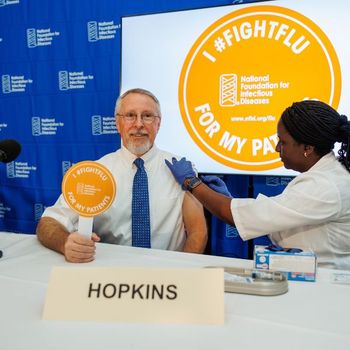
Wound Infection Prevention is Key to Avoiding Infected Prosthetic Knees
The number of people that undergo an operation to have a prosthetic knee joint is increasing. One reason is that the population is getting older, another is that people are also getting heavier, which is a factor in the development of osteoarthritis. The number of knee replacement operations has increased by 9 percent a year in recent years.
"So if 1 percent to 2 percent of the operations lead to bacterial infection, then the need for revision re-operation will also increase," says Anna Stefánsdóttir of Lund University, who is defending the thesis, "The Infected Knee Arthroplasty" on Dec. 9. This often involves two operations. First, the old prosthesis is removed and temporarily replaced with bone cement, while the patient is treated with antibiotics to eradicate the infection. This takes six weeks and during this time the patient can usually remain at home. Then a further operation follows to insert a new prosthesis. In some cases it is not possible to put in a new prosthesis. These patients can be treated with an arthrodesis, or removal of the prosthesis (which leaves the leg without a real knee joint, often confining the patient to a wheelchair). In exceptional cases the infection leads to amputation.
Stefánsdóttir reviewed almost 480 cases of revision knee replacement between 1986 and 2000.
"Over time more patients have received a new knee prosthesis and fewer are treated with an arthrodesis, but still there are many people who do not get rid of the infection. Other studies show that those who have to have a second operation because of an infection are less satisfied than those who have to have their knee joint changed because the prosthesis has come loose or become worn," she says.
Stefánsdóttirsays it is important that the healthcare service does its utmost to avoid infection in the wound. This means having good ventilation in the operating theatre, ensuring the doors are tightly closed, and ensuring that preventive antibiotics are given at exactly the right time before the operation.
"It is also important to be observant of wound complications. If an infection is discovered in time, it is possible to open the wound and clean out the bacteria before they have had chance to spread. Newly operated patients should have a 'VIP lane' so that they can go straight to the hospital orthopaedics department and not have to go via primary care," Stefánsdóttir says.
In Stefánsdóttir's view, re-operations due to infection should be centralized to specialist units, because they require such close cooperation between orthopaedists and infectious disease specialists. She says that there are orthopedic clinics that only carry out one such operation a year, which makes it more difficult to establish the right routines.
Newsletter
Stay prepared and protected with Infection Control Today's newsletter, delivering essential updates, best practices, and expert insights for infection preventionists.






